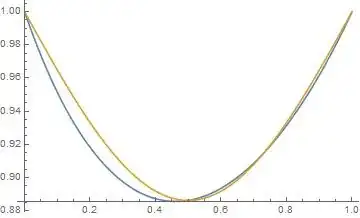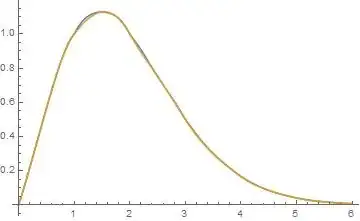I don't know/haven't used LaTeX yet but I'll do my best to keep it simple,
I'm working on my undergrad senior project and I'm trying to find an inverse function for f(x)=(x-1)! just in the positive reals. I was inspired to ask this question when in one of my probability classes my professor talked about how something like π! existed. Now, obviously, this isn't a 1:1 function so an inverse doesn't exist, but I first restricted the function just to x > 0 and then restricted it further after finding the minimum which is x=1.461632... or the positive root of the digamma function. You can see what I mean on this graph (the green one is what I'm trying to find the inverse of). After restricting the domain to x>1.461632... , the function is 1:1 and an inverse does exist.
This is where I'm stuck at.
I guess what I'm asking is that is there a way to find this inverse? I know that, for example, f^-1(120)=5 and f^-1(3(√π )/4)=2.5 but what of something like f^-1(25) or f^-1(e)? I've seen things like Stirling's Approximation and finding an inverse based off of that but I wanted to see if anybody else has any ideas of what I can do next.
Thank you for your time and let me know if you have any questions about my post.


